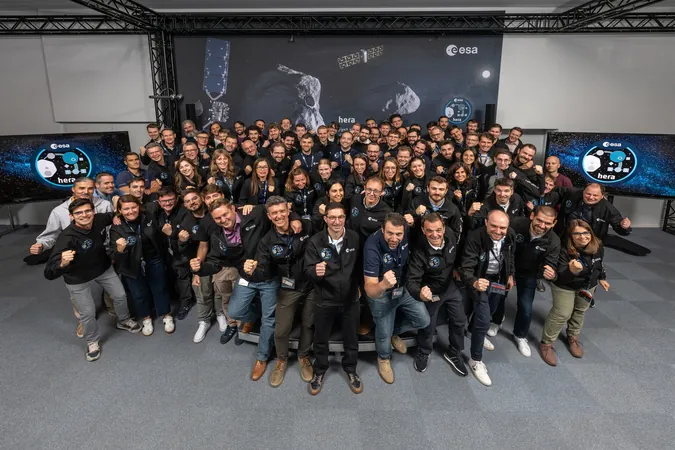
Hera Mission Set for Historic Launch: The Future of Asteroid Defense is Now!
2024-10-06
Excitement is palpable at the European Space Agency’s (ESA) ESOC mission control center in Darmstadt, Germany, as preparations intensify for the upcoming launch of Hera, set to take place this month from Cape Canaveral Space Force Station aboard a SpaceX Falcon 9 rocket. This mission is not just another launch; it marks a monumental step in planetary defense and Europe's ongoing space exploration efforts.
Hera represents Europe’s first foray into asteroid exploration and is poised to be the pioneering spacecraft to rendezvous with and investigate a binary asteroid system. This system includes Didymos, which stands at the forefront of humanity's first real attempt to address the potential threat of asteroids—the groundbreaking technique known as asteroid deflection.
Two years ago, the DART (Double Asteroid Redirection Test) mission, conducted by NASA, catapulted into the spotlight as it successfully crashed into Dimorphos, a 151-meter asteroid within the Didymos system. This impactful event altered Dimorphos’ orbit around its larger counterpart, Didymos, which is 780 meters in diameter. Hera's upcoming mission will conduct a comprehensive post-impact examination of Dimorphos, utilizing advanced scientific instruments onboard as well as two CubeSat companions to measure the success of this asteroid deflection experiment. The results could pave the way for a reliable and repeatable method of planetary defense, potentially safeguarding our planet from future cosmic threats.
The team at ESOC, gathered at the Press Centre, is dedicated to seeing Hera through its critical early moments in space, its lengthy two-year transit to Didymos—which includes a notable flyby of Mars—and its eventual exploration of the two target asteroids. After months of rigorous preparations that included simulations and detailed planning, the team conducted a successful launch dress rehearsal this past Saturday. This crucial test involved all mission participants ensuring robust communication links between ESOC, ground stations, and the spacecraft, alongside a meticulous walkthrough of the launch timeline.
With all final checks now complete and the team united in purpose, mission control has officially declared: it’s GO for launch!
Stay tuned for thrilling updates on launch day by following ESA on social media. This mission not only represents a scientific achievement but also carries the weight of ensuring the safety of our planet in the face of cosmic threats. Who knows? This could be the launch that changes everything for asteroid defense!



 Brasil (PT)
Brasil (PT)
 Canada (EN)
Canada (EN)
 Chile (ES)
Chile (ES)
 España (ES)
España (ES)
 France (FR)
France (FR)
 Hong Kong (EN)
Hong Kong (EN)
 Italia (IT)
Italia (IT)
 日本 (JA)
日本 (JA)
 Magyarország (HU)
Magyarország (HU)
 Norge (NO)
Norge (NO)
 Polska (PL)
Polska (PL)
 Schweiz (DE)
Schweiz (DE)
 Singapore (EN)
Singapore (EN)
 Sverige (SV)
Sverige (SV)
 Suomi (FI)
Suomi (FI)
 Türkiye (TR)
Türkiye (TR)